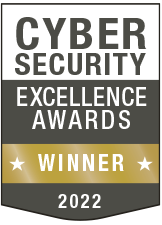Photo Gallery
 |
 |
LYNX MOSA.ic™


Additional Info
| Company | Lynx Software Technologies |
| Company size | 50 - 99 employees |
| Website | https://www.lynx.com/ |
NOMINATION HIGHLIGHTS
For 30 years, Lynx Software Technologies (Lynx) has built platform architectures for world-class builders of safety- and, increasingly, security-critical software systems. Through its groundbreaking virtualization and RTOS offerings, Lynx Software Technologies has set the industry standard for safety and security. It achieves this through:
– The (provable) separation of applications from each other
– The delivery of deterministic (sub-millisecond) responses to has real-time events
– Fine-grained, immutable allocation of hardware resources to specific applications/virtual machines
A broad set of traditional IT infrastructure now deploys services on virtualized hardware. This shift is occurring across a range of embedded markets as customers look to drive down cost, power and form factors of electronics. For mission-critical systems – systems that simply HAVE to work in a deterministic, safe and secure way – consolidating what were historically multiple subsystems onto a single high-performance platform is a challenging step. Imagine a braking system in a vehicle being run from the same hardware as an infotainment system. The system architecture has to guarantee the braking system will have access to the resources it needs no matter what is running on the system at that moment.
This is the focus of LYNX MOSA.ic™, which is then coupled with third-party technologies to form solutions optimized for specific applications, including avionics, industrial, Unmanned Aerial Vehicles (UAV) and satellites.
LYNX MOSA.ic™ has garnered strong interest from leaders and innovators, including Bosch, BAE Systems, Collins Aerospace, General Atomics and Lockheed Martin.
In 2021, Lynx dramatically enhanced this product with management functionality to enable systems based on LYNX MOSA.ic to be securely managed from public and/or private clouds.
How we are different
- Many companies that claim small and efficient hypervisors are actually based on a real-time operating system kernel. The challenge with this approach is that this represents a single point of failure in a system. We have seen with a large number of cyberattacks during 2021 (Colonial pipeline, Water Treatment plant in Florida, etc.) that a compromised operating system exposes all of the system's crown jewels to hackers. Lynx's approach is to immutably carve up a system into isolated areas. In some cases, important assets can be implemented in bare metal code. There is no attack surface in the hypervisor that an attacker can breach.
- The separation kernel hypervisor at the core of LYNX MOSA.ic has no device drivers associated with it. It is there to purely establish system permissions for specific virtual machines/applications. What this means is that users simply harness existing drivers in their operating systems, reducing the typical approach with multiple layers of abstraction, making it extremely difficult to guarantee real-time responses without rewriting large amounts of code. That's why the world's leading avionics and defense companies choose Lynx.
- Many of Lynx's competitors focus on generating revenue from the real-time operating system itself. While many customers in the aerospace and defense industry see value in the combination of the separation kernel hypervisor, LynxSecure AND the RTOS due to the accelerated and derisked path to DO-178 DAL A certification, it actively pursues opportunities where customers are looking to use open-source software (Linux, FreeRTOS, etc.) and, indeed, technology from Lynx's competitors, to complete a solution.

Vote by Sharing
- Like
- Digg
- Tumblr
- VKontakte
- Buffer
- Love This
- Odnoklassniki
- Meneame
- Blogger
- Amazon
- Yahoo Mail
- Gmail
- AOL
- Newsvine
- HackerNews
- Evernote
- MySpace
- Mail.ru
- Viadeo
- Line
- Comments
- SMS
- Viber
- Telegram
- Subscribe
- Facebook Messenger
- Kakao
- LiveJournal
- Yammer
- Edgar
- Fintel
- Mix
- Instapaper
- Copy Link
Each completed social share counts as a vote for this award nomination.



